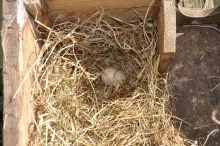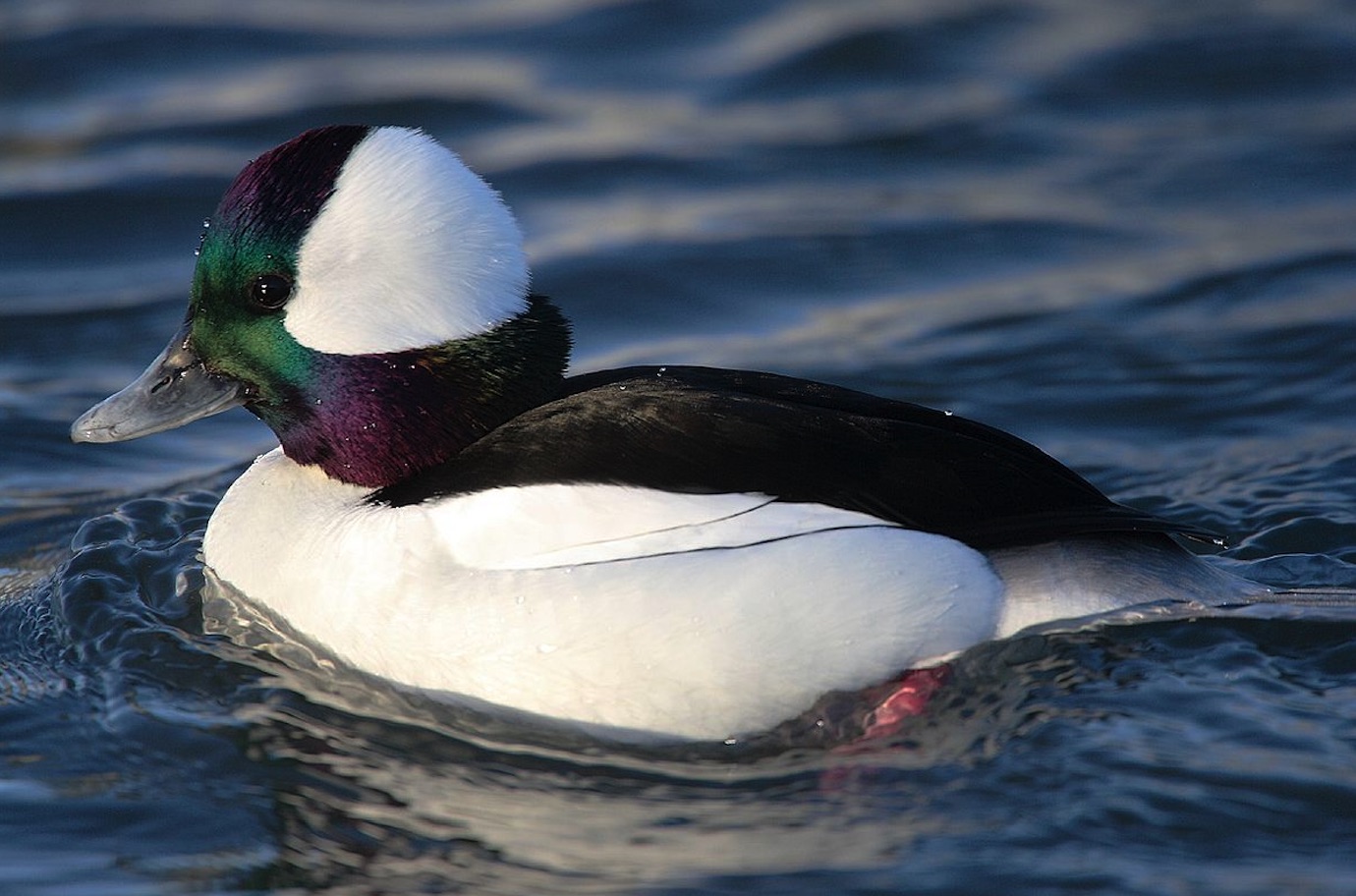
Bufflehead (Bucephala albeola)
Species name
- Dutch name:
- Buffelkopeend
- English name:
- Bufflehead
- German name:
- Büffelkopfente
- French name:
- Petit Garrot
- Scientific name:
- Bucephala albeola
Scientific classification
- Order:
- Anseriformes
- Family:
- Anatidae
- Onderfamilie:
- Merginae
- Genus:
- Bucephala
Description
- Description:
Male:
Head black, glossed bronze, green and purple, with large triangular wedge of white from below eye extending to rear, forming bushy crest. Neck, upper mantle, breast, flanks and belly white, flanks narrowly boarded black above; vent and undertail-converts pale grey. Lower mantle and back; rump black with grey sides; tail grey, tipped white. Inner scapulars black, outer white, producing broad white band along closed wing: 11.5 – 15.8 ounces. Upper wing black, with large white patch extending from forewing, apart from leading edge , onto secondaries , while white of scapulars forms stripe each side of back, separated from white on wings by black tertails ; underwing grayish , with secondaries white .Bill blue- grey, with darker nail tip and base which can be black to just grey depending on the individual. Legs and Feet pale pink.Female:
Head smaller, dark brown with long narrow white patch below the eye. Neck and all underparts grey –brown, apart from whitish center to lower breast and belly. Upperparts darker sooty brown, greyer on rump and tail – converts. Upper wing blackish-brown , with white restricted to inner and middle secondaries and inner greater converts, separated by dark band ; underwing grayish , with secondaries white, But less white on secondaries. Bill dark bluish grey; legs and feet pinkish grey.Juvenile:
Smaller white patch on head and duller brown above and greyer below. Adult features gained first winter but, does not get full adult plumage tell second winter.
- Behaviour:
Bufflehead dive underwater to catch aquatic invertebrates. When courting females, male Buffleheads swim in front of them, rapidly bobbing their heads up and down. In flight, you can identify Bufflehead by noting their small size, fast wingbeats, and pattern of rocking side-to side as they fly.
Buffleheads reach sexual maturity when they are about 2 years old. Pair bonds form during the first half of April (during spring migration) and they usually keep the same mate for years. During courtship, the male often puts on an extensive display. There are various displays he will initiate, but a common “dance” is the drake swimming with the bill up, neck stretched out, and head puffed to twice its normal size to show off its white head patch. He then might stand almost erect with his bill against his swelled breast, followed by a quick dive under the female. Throughout the display, there is much head bobbing and body movement from this energetic little duck.Buffleheads nest almost exclusively in tree cavities, and can squeeze through holes as small as 5,5 centimeters in diameter.
Standard Measurements
- Body Length (cm):
- The male (drake) of the Bufflehead measures approximately 32-40 centimeters. The female measures approximately 32-40 centimeters.
- Body Weight (grams):
- The male will weight about 420-550 gram. The female will weight about 330-450 gram.
The weight is notoriously variable and can only be used as indication!
- Habitat:
Seaducks are generally winter-hardy and sociable. They are preferably kept on a large area of clean, cold, deep water, at least some of which (preferably half the area) should be more than 60cm and preferably more than1m deep. As with other diving ducks, most species are relatively ungainly on land and ponds should have shallow sloping banks. Some cover along the pond edges will generally be appreciated. Preferred nesting sites vary greatly within this group, from open ground nesting to thick vegetation and tree holes.
- Note:
Clean, deep (1m plus), preferably running water is important, with natural food present to supplement the artificial diet if possible. Floating pellets (e.g. trout pellets and breeder pellets) and animal material, such as insectivorous food has been recommended previously in the absence of specialized diets.
These ducks have not been considered easy to breed, although they are bred regularly in some collections. A raised nest box should be provided and seclusion, with disturbance at the nest avoided. The preferred nest box is a hollowed out log, 60-90cm high, provided with a roof, nesting material and a ramp leading to a 7,5cm diameter entrance hole about 23cm from the top. The prepared log may be set on a pole over water, or on an island or on the bank near the water. Nest boxes should be available from as early as mid-February to allow for laying which may start in early March or may not occur until April or May. Ducklings are considered delicate and may be difficult to raise; a single duckling should be provided with companions e.g. of a teal species. Livefood should be provided to encourage feeding, and force-feeding (1ml every four hours) may be required initially.
- Breeding:
- The female Bufflehead usually lays from 5-12 cream-white eggs and incubates them for 29-31 days.
- Artificial incubating:
The ideal relative humidity for incubating most waterfowl eggs is 55% (ground nesters) and 40% (cavity nesters). The temperature is usually 37.4°C. Set ventilation as recommended by the incubator manufacturer. Eggs must be turned, either automatically or by hand, a minimum of 4 times a day. As the duckling develops there is a loss of water from the egg and the air sac gets bigger. In normal development of an egg with a 29-31 days incubation, the air sac occupies about a third of it three days earlier. Cleanliness is vital and ideally eggs should be moved to a separate hatcher at this point, where the humidity should be increased to 65% and even higher once they have pipped internally.
- Bird banding:
- Recommended closed leg band ring size for the Bufflehead is 8 mm.The leg band ring can only be applied on a young small sea duck at around 10 days old.
- It doesn't matter what leg that you band, but it's good to have a consistent system. Suggested: Left leg = Female, Right leg = Male
- Rearingfeed:
-
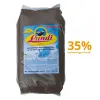
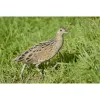

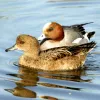


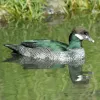 Floatable special rearing feed for all ornamental waterfowl species, even for problematic eaters. This ideally balanced complete feed with 35% protein content forms the basis for healthy growth and lifelong vitality. Made exclusively from wholesome and selected raw materials, Lundi Micro is also ideally suited for the year-round feeding of waterfowl.
Floatable special rearing feed for all ornamental waterfowl species, even for problematic eaters. This ideally balanced complete feed with 35% protein content forms the basis for healthy growth and lifelong vitality. Made exclusively from wholesome and selected raw materials, Lundi Micro is also ideally suited for the year-round feeding of waterfowl.
- Maintenance food:
-


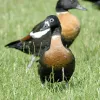


Floating full food for all sea ducks, green ducks, eider ducks and geese, especially in the moulting and breeding phase ideally suited. Packed with wholesome raw materials, natural vitamins and trace elements, this performance food with a protein content of 30% forms the basis for lifelong vitality.


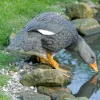
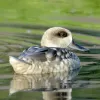
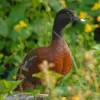


Floatable special complete food for sea birds with the highest nutritional requirements. Each chunk contains the complete nutrient spectrum. The high protein content of 35% ensures a healthy and species-appropriate diet. Spiral algae give a more magnificent coloration of plumage and sea salt promotes the salt gland.
- Regulation:
- Europese soort
- Regulation:
Het is niet verboden om deze vogels te houden die van nature in Nederland voorkomen, op voorwaarde dat deze vogels in gevangenschap zijn geboren; nakweek dus. Deze vogels zijn voorzien van een gesloten pootring. Het is wel verboden om deze vogels te houden die in het wild gevangen zijn. Alleen bepaalde instanties, zoals vogelasiels en vogelhospitalen, zijn bevoegd om jonge en gewonde wilde vogels te houden. Deze bescherming van vogels wordt vormgegeven door schadelijke handelingen te verbieden zoals:het doden, verwonden, vangen, bemachtigen en met het oog daarop opsporen van vogels (art. 9 Flora- en faunawet); het opzettelijk verontrusten van vogels (art. 10 Flora- en faunawet);het beschadigen, vernielen, uithalen, wegnemen en verstoren van nesten, holen of andere voortplantings- of vaste rust- of verblijfplaatsen van vogels (art. 11 Flora- en faunawet);en het zoeken, rapen, uit het nest nemen, beschadigen of vernielen van eieren van vogels (art. 12 Flora- en faunawet).

